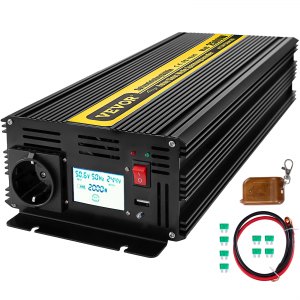Just took delivery of a 2500W pure sine wave inverter to run off my leisure battery.
To test it connected it to a fully charged 20Ah jump start battery power pack.
Input voltage 13.5V: output 50 Hz 235V
Connecting a 1600 watt coffee machine results in the red light and no output.
Connected a 600/1200w/1800w infra red lamp to it and it works at 600W but red light at 1200W
Am puzzled.
Thanks as always
To test it connected it to a fully charged 20Ah jump start battery power pack.
Input voltage 13.5V: output 50 Hz 235V
Connecting a 1600 watt coffee machine results in the red light and no output.
Connected a 600/1200w/1800w infra red lamp to it and it works at 600W but red light at 1200W
Am puzzled.
Thanks as always




